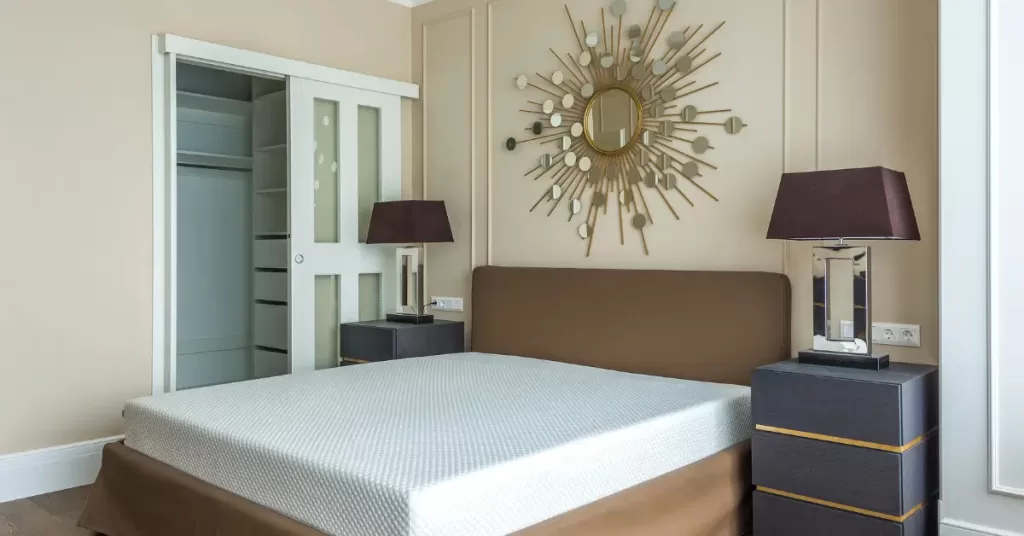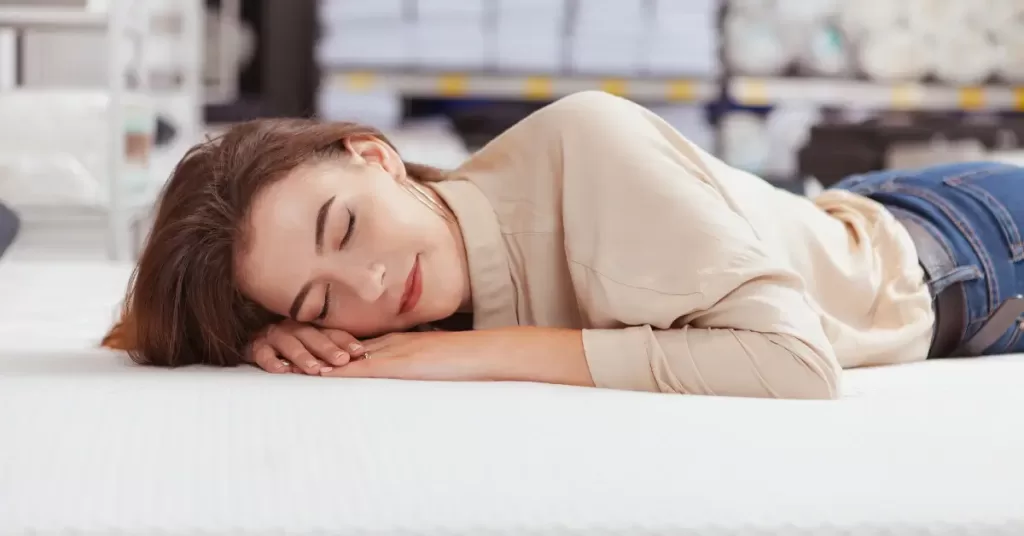When to Get Rid of Mattress: Key Signs to Look For
Your mattress is like a trusty sidekick in your nightly quest for restorative sleep. But even the best mattress has a lifespan. Keeping a mattress beyond its prime doesn’t just compromise your comfort—it can also affect your health and overall well-being.
Many overlook the subtle (and not-so-subtle) signs of a dying mattress. Clinging to an old, saggy, or allergen-filled mattress can lead to poor posture, sleepless nights, and even issues with bed bugs.
This guide helps you recognize when to dispose of a mattress, choose the best mattress for your needs, and explore eco-friendly ways to get rid of a used mattress. Let’s take a closer look at how you can sleep better, live better, and dream bigger.
Understanding Mattress Lifespan
The lifespan of a mattress depends on its material quality, usage, and maintenance. Knowing how long your mattress type typically lasts can help you decide when it’s time for a replacement. Here’s a quick guide:
- Innerspring Mattresses: Last about 7–8 years. Affordable but prone to sagging as metal coils lose resilience and thin padding compresses. Ideal for budget-conscious shoppers or short-term users.
- Memory Foam Mattresses: Last 8–10 years with proper care. Known for contouring and pressure relief, but can develop sagging without regular rotation. Best for side sleepers and those with joint discomfort.
- Latex Mattresses: Last 10–12 years, making them the most durable option. Latex retains its shape and resists sagging, ideal for eco-conscious buyers and long-term investments.
- Hybrid Mattresses: Last 7–10 years, combining foam and coils for balanced support. Longevity depends on material quality. Great for couples with different sleep preferences.
Each type has unique benefits, but regular maintenance, like rotating the mattress and using a protector, can help extend its lifespan. Recognize signs of sagging or discomfort as indicators it’s time for a replacement.
Key Signs It’s Time to Replace Your Mattress
Your mattress may not speak, but it sends clear signals when it’s past its prime. Ignoring these signs can lead to poor sleep, discomfort, and even health issues. Here’s what to look out for:
1. Physical Signs of Wear and Tear
- Sagging: A visible dip in the mattress indicates broken-down materials that disrupt proper spinal alignment.
- Lumps and Bumps: Uneven padding or springs poking through can create pressure points, making sleep uncomfortable.
- Torn Fabric: Tears expose internal layers to dust and moisture, accelerating mattress decline.
2. Discomfort and Pain
- Back Pain and Stiffness: An unsupportive mattress misaligns your spine, causing strain and tension.
- Pressure Points: Uneven weight distribution leads to discomfort in areas like the hips and shoulders.
- Frequent Position Adjustments: If you’re constantly shifting to get comfortable, your mattress is no longer doing its job.
3. Allergies or Sensitivities
- Dust Mites: Local mattresses can house allergens that trigger sneezing, runny noses, and itchy eyes.
- Mold and Bacteria: Moisture buildup creates a breeding ground for harmful microbes, exacerbating respiratory issues.
- Impact on Asthma and Skin Conditions: Allergens can worsen asthma, eczema, or other sensitivities, leading to irritation and discomfort.
4. Changes in Sleep Quality
- Feeling Unrested: If you’re waking up feeling groggy or not refreshed, your mattress could be affecting your sleep cycle.
- Better Sleep Elsewhere: If you notice improved sleep quality on other beds, it’s a strong sign your current mattress is underperforming.
5. Age of the Mattress
- Most mattresses have a lifespan of 7–10 years, depending on the type and quality. If your mattress is nearing or exceeding this range, it’s likely time to replace it, even if visible signs aren’t immediately apparent.
6. Noisy Springs or Reduced Support
- If your mattress creaks or the springs feel uneven, it’s a sign of wear that affects support and comfort. This can disrupt your sleep and contribute to aches and pains.
7. Hygiene Factors
- Odors: Persistent smells, despite cleaning, can indicate the buildup of mold, sweat, or bacteria inside your mattress.
- Unhygienic Conditions: Over time, mattresses collect sweat, dead skin, and allergens, making them a less-than-ideal sleeping surface.
When it’s time to part ways with your old mattress, consider the benefits of working with a professional disposal service for hassle-free removal. To ensure it doesn’t end up in a landfill, explore local recycling facilities that specialize in recycling mattresses.
Saying bye-bye mattress doesn’t have to be wasteful—it can be a sustainable decision.
Benefits of Having a New Mattress

Upgrading your mattress isn’t just about comfort—it’s about improving your quality of life. A new mattress impacts your sleep, health, mental well-being, and productivity in profound ways.
Better Sleep Quality
A supportive mattress promotes restful sleep by aligning your spine, reducing disturbances, and encouraging deep sleep cycles. If your old mattress is causing discomfort or tossing and turning, a replacement can leave you waking up refreshed and energized.
Finding the perfect mattress is key to achieving the quality sleep you deserve.
Reduced Pain and Discomfort
Old, sagging mattresses can lead to back pain, stiffness, and pressure points. A new mattress with proper support and pressure relief helps reduce strain on your body, alleviating chronic pain and morning stiffness. Don’t wait until you’re having trouble sleeping to invest in your health.
Healthier Sleep Environment
Over time, mattresses accumulate dust mites, mold, and allergens. Replacing your mattress ensures a cleaner, allergen-free sleep space, improving air quality and benefiting those with allergies or respiratory issues. This is especially true if the condition of your mattress has visibly deteriorated.
Improved Mental Health
Better sleep enhances mood, focus, and stress reduction. A quality mattress supports mental clarity and emotional stability by helping you achieve uninterrupted, restorative rest. Every mattress plays a role in shaping how rested and productive you feel daily.
Increased Energy and Productivity
Waking up well-rested boosts energy levels, productivity, and the ability to stay active throughout the day. Avoid the burnout caused by sleep deprivation with a mattress that helps you recharge.
A Worthy Investment
While a new mattress may seem costly, it’s a long-term investment in your health and happiness. Durable, high-quality mattresses reduce the likelihood of health issues linked to poor sleep and ensure years of comfort. If you decide to buy a new mattress, research options that match your needs and budget for the best results.
Replacing your mattress is more than a simple upgrade—it’s a step toward better sleep, better health, and a better life.
Sustainable Options to Get Rid of a Mattress
1. Mattress Recycling and Donation
- Donation: If your mattress is still in good condition, consider donating your mattress to organizations that accept mattress donations, like Habitat for Humanity. Some mattress companies even partner with charities to help you give back.
- Recycling: Recycle your mattress through recycling centers that accept mattresses.
2. Repurposing and Upcycling Ideas
- DIY Projects: Use foam or springs for creative projects instead of having to throw away the entire mattress. This not only saves money but also helps reduce waste.
3. Proper Disposal Methods
- Professional Junk Removal Services: Call a junk removal company for mattress hauling services. Let them take your old mattress and box spring responsibly. They know proper disposal or recycling.
- Pickup Services: Some trash and recycling services offer bulk item pick-up. Call your local provider for details on scheduling a curb pickup.
Upgrade Your Mattress for Better Sleep and a Healthier You

Recognizing when to replace your mattress is key to maintaining good sleep hygiene, health, and overall well-being. A supportive mattress can mean the difference between waking up refreshed or dragging through your day.
If your mattress shows signs of wear, causes discomfort, or triggers allergies, it’s time to upgrade or donate it to a local facility. To make the process easier, consider Spartan Junk Removal’s mattress removal. Our team ensures your old mattress is responsibly handled through donation, recycling, or eco-friendly disposal services.
Ready to improve your sleep quality? Start exploring mattress options today and take the first step toward better rest.
Frequently Asked Questions About Getting Rid of a Mattress
How Often Should I Replace My Mattress?
A mattress should generally be replaced every 7–10 years, depending on its type, usage, and maintenance. Latex mattresses can last up to 12 years, while innerspring options may wear out after 7 years. If your mattress feels uncomfortable, shows visible damage, or affects your sleep quality, it’s time to replace it—even if it hasn’t reached 10 years.
What Are the Signs That My Mattress Needs Replacing?
Key signs include sagging, discomfort that disrupts your sleep, or waking up with stiffness and aches. Allergens like dust mites or mold may also contribute to respiratory issues. If the hotel or guest beds feel more comfortable than your own, your mattress likely isn’t meeting your needs anymore.
Can I Donate My Old Mattress?
Yes, many organizations accept gently used mattresses in clean, undamaged condition. Examples are Habitat for Humanity and local shelters. Always check specific requirements before donating. Some charities may not accept mattresses for health reasons. If donation isn’t possible, consider recycling or eco-friendly junk removal services.
How Do I Recycle a Mattress?
Mattresses can be broken down into reusable components like foam, fabric, and metal springs. Specialized recycling facilities handle this process, and some junk removal services also offer recycling. Check with local waste management for drop-off locations or recycling programs in your area.
What’s the Best Type of Mattress for Side Sleepers?
Side sleepers benefit from mattresses with excellent pressure relief and contouring, such as memory foam or hybrid models. Memory foam cushions the hips and shoulders, while hybrids offer a balance of softness and support. Choose a medium to soft firmness for optimal comfort and alignment.






